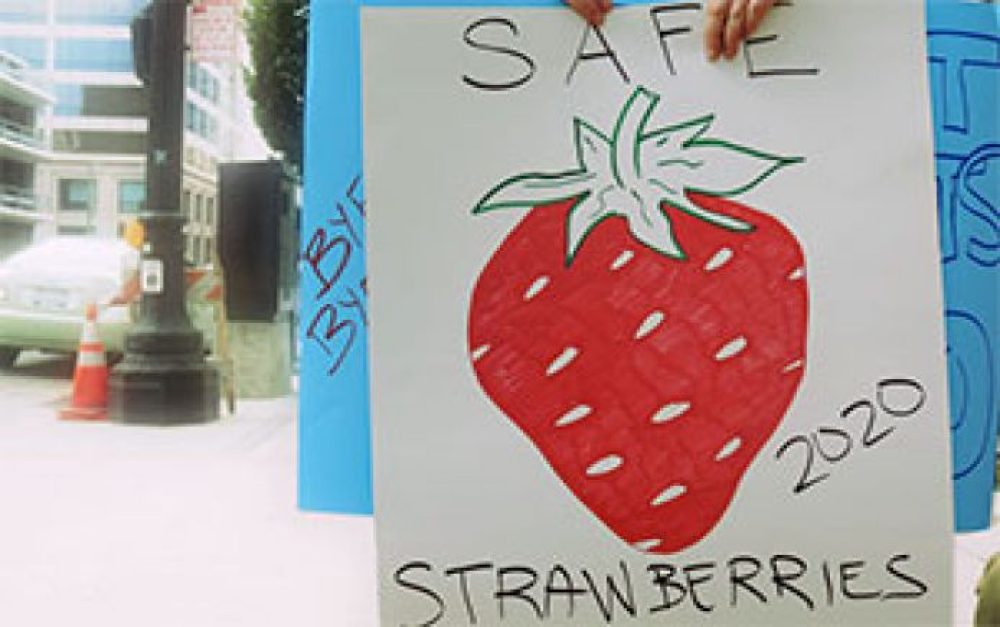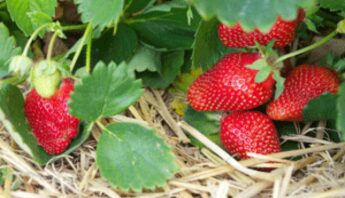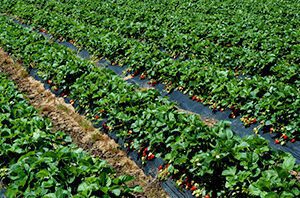In a letter submitted yesterday, scientists called out California officials for downplaying evidence of health hazards — including cancer — posed by a widely used fumigant pesticide.
Often applied to the state's strawberry fields, new rules may pave the way for even more use of chloropicrin unless policymakers follow recommendations from both state and independent scientists. This story is all too familiar.
In 2011, PAN worked with attorneys at Earthjustice and researchers at California Rural Legal Assistance Foundation to reveal how state officials took a “mix-and-match” approach to the science of the cancer-causing fumigant methyl iodide. Documents showed that senior “risk mitigation” staff cherry-picked data from toxicologists and ignored the recommendations of independent scientists. The chemical was later approved, only to be taken off the market due to public outcry and health concerns.
And it appears that the same story is playing out under Governor Brown's Administration. Despite concerns about the cancer potential voiced by scientists at two different state agencies, as well as independent scientists, senior staff at the Department of Pesticide Regulation allow Californians to be exposed to chloropicrin at unsafe rates.
Susan Kegley, PhD, a consulting scientist with PAN, CEO of the Pesticide Research Institute, and co-author of the science letter explained it this way:
"The Department of Pesticide Regulation decisionmakers altered that conclusion on the basis of a statistical argument to allow more exposure to the chemical. The fact remains that the studies show chloropicrin is highly irritating and a potent carcinogen. DPR should be acting to prevent harm to California communities, not to allow more of it.”
The letter from scientists and health professionals was submitted as part of a convoluted process state officials have created to review chloropicrin, with the opportunity for public comments closing this weekend.
What science says
Based on the best available evidence, including the state’s research, chloropicrin stands out as a potent carcinogen. As scientists from California's Office of Environmental Health Hazard Assessment put it simply:
“Chloropicrin has been observed to induce gene mutations and chromosomal damage.”
That same agency noted that chloropicrin is 100 times more potent as a cancer-causing agent than formaldehyde and about 20 times more potent than benzene, a component of gasoline.
When officials ignored these findings, state scientists pushed back. Still, California decisionmakers continued to dismiss the science, especially around acute illness; they set allowable concentration levels of pesticide in the air at 25 times higher than those the agency’s own scientists say will prevent illness in children.
Better protections needed
It is clear that people living near or working in strawberry fields are not being adequately protected from chloropicrin. PAN and our partners are calling on California officials to adopt better health protections for those most affected by fumigant pesticide exposure, especially as state officials ignore the mounting evidence.
Since we shared these concerns at hearings across the state earlier this summer, the call for safe strawberry fields has been growing. Along with partner organizations — Environmental Working Group, Food and Water Watch, United Farm Workers, Safe Strawberry Working Group – Monterey County, Healthy Tehama Farms and the Center for Environmental Health — we delivered over 15,000 petitions, postcards and letters to officials in Oakland and Sacramento yesterday underscoring the need for these basic health protections:
- Create "no fumigation" buffer zones that meet the scientific standard to protect vulnerable communities, especially children.
- Replace standard tarps with modern tarps and prohibit all untarped applications involving chloropicrin.
- Require comprehensive neighbor notification and comprehensive real-time fumigation monitoring.
California officials have some important decisions to make in the coming weeks and months. Hopefully they will follow, rather than ignore, the evidence presented by their own scientists — evidence underscored by other science and health professionals. It's time for more protection from drifting fumigant pesticides like chloropicrin. And it's time to invest in new technologies and practices that promote sustainable, fair and cutting-edge farming.








